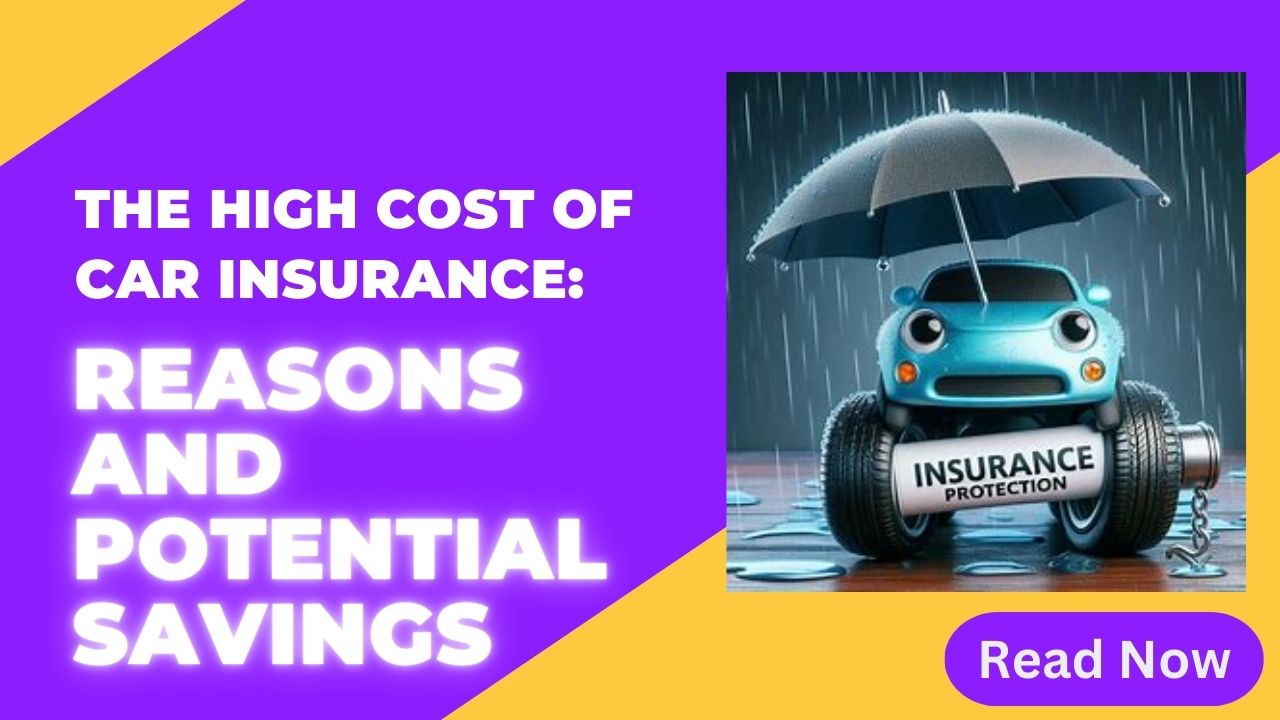Have you ever wondered why car insurance costs seem to keep rising? You’re not alone. Many drivers find themselves scratching their heads, trying to understand why they pay so much for their car insurance premiums. In this blog post, we’ll dive into the reasons behind high car insurance costs and share some actionable tips to help you save money.
Table of Contents
Why Car Insurance is Expensive?
Factors Influencing Car Insurance Rates
Several factors can impact how much you pay for car insurance. One of the primary factors is your driving record. Insurance companies look at your past behavior on the road to predict future risk. If you have a clean driving record, you’re likely to pay less. However, if you have speeding tickets or accidents, expect your premiums to be higher.
Another significant factor is your location. Urban drivers often face higher rates due to increased traffic, higher chances of accidents, and greater risk of theft. On the other hand, rural drivers typically enjoy lower premiums.
The type of vehicle you drive also plays a crucial role. High-performance cars or luxury vehicles cost more to insure because they’re more expensive to repair or replace and are often targeted by thieves.
The Impact of Claims and Accidents
If you’ve filed previous claims or been involved in accidents, your car insurance premiums will likely increase. Insurance companies view drivers with a history of claims as higher risk. According to industry data, premiums can rise significantly after an at-fault accident. For example, your rates could jump by 30% or more following a single claim.
Credit Score and Car Insurance
Many drivers are surprised to learn that their credit score can affect their car insurance rates, as well as rates for other financial products like term life insurance. Insurers use credit-based insurance scores to help predict the likelihood of a claim. Drivers with higher credit scores tend to file fewer claims, leading to lower premiums. If your credit score is less than stellar, you might see higher rates.
To improve your credit score and potentially lower your car insurance costs, pay your bills on time, reduce your debt, and check your credit report for errors.
State Regulations and Minimum Coverage Requirements
Car insurance costs can vary widely depending on where you live due to state regulations and minimum coverage requirements. Each state has different laws regarding the amount and type of insurance drivers must carry. For example, states like Michigan, which require unlimited personal injury protection (PIP), tend to have higher premiums compared to states with lower minimum requirements.
Insurance Company Practices
Each insurance company has its own methods for assessing risk and pricing policies, leading to variations in car Insurance Rates. Some companies might offer lower rates for drivers with specific profiles, while others might be more competitive for different types ofdrivers. This is why it’s crucial to shop around and compare quotes from multiple insurers to ensure you’re getting the best deal.
Strategies for Saving on Car Insurance
Shopping Around for the Best Rates
One of the most effective ways to save on car insurance is by comparing quotes from different companies. Insurance premiums can vary significantly from one provider to another, so it’s worth spending some time to shop around. Use online comparison tools to quickly and easily compare rates from various insurers.
Bundling Insurance Policies
Another great way to save money is by bundling your insurance policies. Many insurance companies offer discounts if you purchase multiple policies from them, such as car and home insurance. This can lead to substantial savings on both policies.
Increasing Deductibles
Raising your deductibles is a straightforward way to lower your monthly premiums. By opting for a higher deductible, you agree to pay more out-of-pocket in the event of a claim. This reduces the risk for the insurer and results in lower premiums for you. However, make sure you choose a deductible amount that you can comfortably afford if you need to file a claim.
Utilizing Discounts
Insurance companies offer a variety of discounts that can help reduce your premiums. Common discounts include safe driver discounts, low mileage discounts, and good student discounts. Safe driver discounts reward those with clean driving records, while low mileage discounts benefit those who don’t drive much. Good student discounts are available for young drivers who maintain good grades.
To take advantage of these discounts, ask your insurance provider what options are available and how you can qualify. Sometimes, taking a defensive driving course can earn you a discount as well.
Maintaining a Clean Driving Record
Keeping a clean driving record is one of the best ways to ensure you’re not overpaying for car insurance. Avoid speeding tickets, accidents, and other traffic violations that can raise your premiums. If you do receive a ticket, consider taking a defensive driving course to remove points from your record and potentially lower your rates.
Improving Your Vehicle’s Safety Features
Equipping your car with safety features can lead to lower insurance premiums. Insurance companies often offer discounts for vehicles with anti-theft devices, airbags, anti-lock brakes, and other safety features. These features reduce the risk of accidents and theft, making you a lower-risk driver in the eyes of insurers.
Long-Term Savings and Financial Planning
Regularly Reviewing and Updating Your Policy
It’s essential to regularly review and update your car insurance policy to ensure you’re getting the best rate and adequate coverage. Life changes, such as moving to a new location, buying a new car, or improving your credit score, can impact your premiums. Set reminders to review your policy annually and compare quotes to see if you can find a better deal.
Considering Pay-Per-Mile Insurance
Pay-per-mile insurance, also known as usage-based insurance, can be a cost-effective option for drivers who don’t drive a lot. With this type of insurance, your premium is based on the number of miles you drive. If you’re a low-mileage driver, you could see significant savings compared to traditional insurance policies.
Loyalty vs. Shopping Around
While some insurance companies offer loyalty discounts for long-term customers, it’s still wise to shop around periodically. Insurers often reserve their best rates for new customers, so you might find a better deal by switching providers. When considering a switch, compare the benefits of loyalty discounts against potential savings from a new policy.
Conclusion
High car insurance costs can be frustrating, but understanding the factors that influence your premiums and taking proactive steps can help you save money. By shopping around, bundling policies, increasing deductibles, and maintaining a clean driving record, you can reduce your car insurance expenses. Don’t forget to regularly review your policy and consider alternative options like pay-per-mile insurance to ensure you’re always getting the best rate.
Take action today by reviewing your current policy and exploring these savings tips. With a little effort, you can lower your car insurance costs and keep more money in your pocket.












